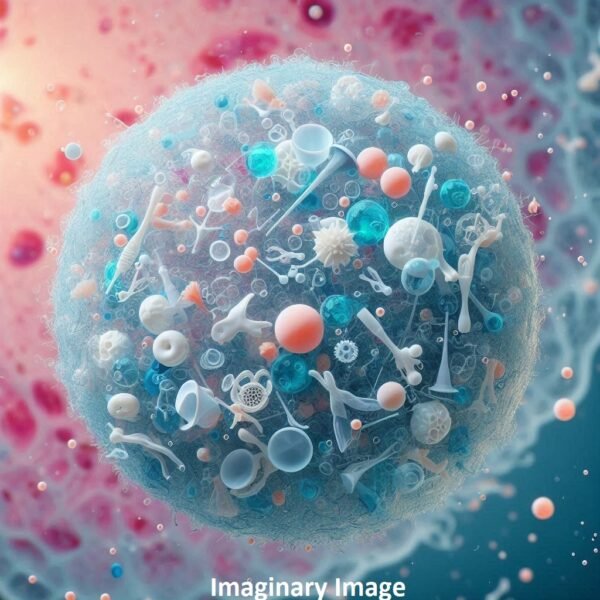Microplastics found in human ovary follicular fluid for the first time

Microplastics have been detected in human ovarian follicular fluid for the first time, marking a significant and alarming discovery in the field of reproductive health. This finding was reported in a peer-reviewed study conducted on 18 women undergoing assisted reproductive treatment at a fertility clinic in Salerno, Italy, where microplastic particles smaller than 10 micrometers were found in 14 of the samples analyzed. The average concentration was about 2,191 particles per milliliter, with a mean particle size of approximately 4.48 micrometers.
What is ovarian follicular fluid?
Follicular fluid surrounds the developing egg (oocyte) in the ovary and provides essential nutrients and biochemical signals necessary for egg maturation and development. The presence of microplastics in this fluid is concerning because it could directly interfere with the egg’s environment, potentially affecting egg quality and maturation.
Potential health implications:
Impact on female fertility: The study raises concerns that microplastics may disrupt the development and maturation of eggs, possibly leading to reduced fertility. Animal studies have linked microplastics to ovarian dysfunction, including diminished oocyte maturation and a lower capacity for fertilization, as well as alterations in ovarian tissue.
Hormonal disruption: Microplastics often carry endocrine-disrupting chemicals such as bisphenol, phthalates, and PFAS, which can mimic or interfere with hormones like estrogen and progesterone. This disruption may contribute to conditions such as polycystic ovary syndrome (PCOS), thyroid disorders, and irregular menstrual cycles.
Inflammation and other health risks: Microplastics absorbed into the bloodstream could trigger systemic inflammation, potentially increasing risks for autoimmune diseases, cardiovascular problems, and certain cancers. Women may be particularly vulnerable due to differences in immune responses.
Pregnancy and fetal development: Exposure to microplastics during pregnancy might affect both maternal and fetal health, as particles could cross the placenta, leading to complications like low birth weight or developmental delays.
Broader health effects: Inhalation or ingestion of microplastics can cause respiratory and digestive issues, including lung inflammation and gastrointestinal discomfort.
Study findings and correlations:
The study found a significant correlation between microplastic concentration in follicular fluid and levels of Follicle-Stimulating Hormone (FSH), which plays a key role in reproductive processes. However, no significant correlations were found with anti-Müllerian Hormone (AMH), fertilization outcomes, miscarriages, or live births in this initial study.
This discovery is part of a growing body of evidence showing that microplastics are pervasive in the human body, having been found previously in urine, semen, and other tissues. The detection of microplastics in ovarian follicular fluid highlights a new potential pathway by which plastic pollution can impact human reproductive health, particularly female fertility. The findings underscore the urgent need for further research to understand the mechanisms of harm and to address the widespread contamination of the environment and human bodies by microplastics.
The detection of microplastics in human ovarian follicular fluid is a groundbreaking finding that raises serious concerns about their impact on women’s reproductive health and fertility, emphasizing the broader implications of plastic pollution on human health. Continued investigation is crucial to fully understand these effects and to develop strategies to mitigate exposure and harm.

